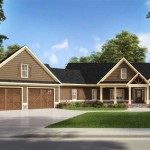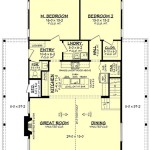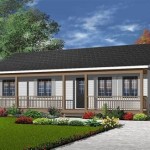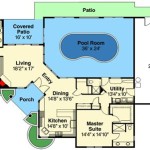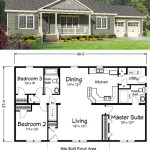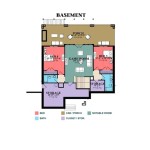House Plans and Build Cost: A Comprehensive Guide
Building a home is a significant investment, and understanding the complexities of house plans and construction costs is crucial for making informed decisions. This article provides a comprehensive guide to navigating the process, covering essential considerations, cost factors, and tips for maximizing your budget.
Understanding House Plans
House plans are detailed blueprints that outline the design and layout of your future home. They encompass various elements, including architectural style, floor plan, room sizes, elevations, and structural details. Choosing the right house plan is a critical step, as it shapes the functionality, aesthetics, and ultimately, the cost of your project.
There are several avenues for obtaining house plans:
- Hiring an Architect: This offers the highest level of customization and personalized design solutions. Architects can create unique plans tailored to your specific needs and preferences.
- Working with a Designer: Designers provide a more affordable alternative, offering pre-designed plans or modifying existing templates to meet your requirements.
- Using Stock Plans: These are readily available online or through plan providers, offering pre-designed options at a lower cost. While they lack the customization of custom plans, they provide a solid foundation for a cost-effective build.
Regardless of the source, ensure the plans are:
- Detailed and Specific: Include clear dimensions, material specifications, and construction details.
- Compliant with Building Codes: Meet local regulations and ensure the safety and structural integrity of the building.
- Reviewed by a Professional: Consult with an architect or engineer to validate the plans and address any potential issues.
Factors Influencing Build Cost
Construction costs are highly variable and depend on numerous factors:
1. Location and Land Costs:
The location of your home significantly impacts its cost. Urban areas tend to have higher land prices and construction costs compared to rural regions. Local building codes, labor rates, and material availability also influence overall expenses.
2. Size and Complexity of the Building:
The size and complexity of your house directly correlate with the cost of construction. Larger homes require more materials, labor, and time, leading to higher expenses. Complex architectural designs with intricate details, custom finishes, and unique features also contribute to increased costs.
3. Materials and Finishes:
Material choices play a crucial role in determining construction costs. High-quality materials, such as hardwood floors, granite countertops, and premium fixtures, come at a premium price. Energy-efficient features like insulation and windows also add to the overall cost but can result in long-term savings. Similarly, interior finishes, including paint, wallpaper, and lighting, can vary significantly in cost, affecting the final budget.
4. Labor Costs:
Construction labor costs are influenced by local market conditions, demand for skilled tradespeople, and the project's complexity. Large-scale projects requiring specialized skills and extensive labor will be more expensive than smaller, simpler builds.
5. Permits and Fees:
Obtaining permits and paying associated fees is an integral part of the construction process. Permit requirements vary by location and can contribute to overall expenses.
6. Contingencies:
It is essential to allocate a contingency budget to account for unexpected costs that may arise during construction. This includes unforeseen site conditions, material price fluctuations, or changes in design.
Tips for Managing Construction Costs
While construction costs can be significant, implementing effective strategies can help you manage your budget effectively:
- Consider Pre-fabricated Homes: Pre-fabricated homes are built off-site and assembled on the construction site, often offering cost savings due to standardized designs and efficient production methods.
- Explore Affordable Building Materials: Research alternative materials that offer cost-effectiveness without compromising on quality. For instance, engineered lumber can be a more affordable option than traditional hardwood.
- Prioritize Energy-Efficient Features: Investing in energy-efficient features like insulation and windows can contribute to long-term savings on utility costs.
- Negotiate with Contractors: Obtain multiple bids from reputable contractors and compare pricing to ensure you're getting the best value for your investment.
- Monitor Progress Regularly: Regularly inspect the construction site and communicate with your contractor to identify potential issues early on and prevent costly delays.
Building a home is a complex undertaking, but understanding the factors influencing cost and employing effective management strategies can help you achieve your dream home within your budget.

How Much Do House Plans Cost Drummond

Affordable House Plans Our Est To Build Blog Homeplans Com

Est House Plans To Build Simple With Style Blog Eplans Com
What Is The Est Type Of House To Build Blog Floorplans Com

2024 Cost Of Drafting House Plans Blueprints Homeguide

Building On The Affordable House Plans Of 2024 Houseplans Blog Com

Building On The Affordable House Plans Of 2024 Houseplans Blog Com

Top 15 House Plans Plus Their Costs And Pros Cons Of Each Design

To Build Home Plan 4 Ways Save Big The House Designers
Est House Plans To Build Simple With Style Blog Eplans Com

